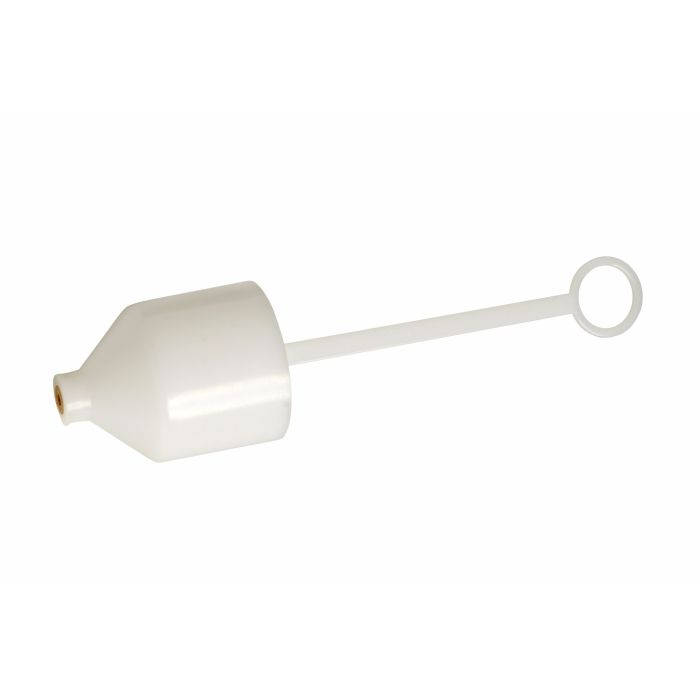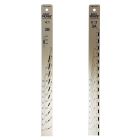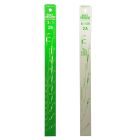|
Why use a Paint Viscosity Cup. Ford No. 4 . Plastic
|
|
|
|
1. Accurate Viscosity Measurement
|
|
|
|
Measures the flow rate of paint or coating, which is essential for proper spray gun performance.
|
|
|
|
Ensures your material isn’t too thick (which can clog the gun) or too thin (which can cause runs and uneven coverage).
|
|
|
|
|
|
|
|
2. Standardized Reference (Ford No. 4)
|
|
|
|
Ford #4 is a common industry standard used for water- or solvent-based coatings.
|
|
|
|
Ensures consistency across batches and shops—critical for quality control and matching manufacturer specs.
|
|
|
|
|
|
|
|
3. Essential for Spray Equipment Setup
|
|
|
|
Helps you tune paint viscosity to match your LVLP or HVLP spray gun requirements.
|
|
|
|
Prevents issues like orange peel, dry spray, or dripping due to improper viscosity.
|
|
|
|
|
|
|
|
4. Easy and Repeatable Use
|
|
|
|
Simply fill the cup, start timing when you lift it, and stop when the paint stream breaks.
|
|
|
|
Gives you a repeatable flow time in seconds, which you can match to your paint product's specs.
|
|
|
|
|
|
|
|
5. Lightweight, Durable Plastic
|
|
|
|
Plastic is corrosion-resistant and won’t react with most common paints or solvents.
|
|
|
|
Ideal for casual users, mobile painters, or quick-shop setups.
|
|
|
|
Lightweight and easy to clean—unlike metal cups that may corrode over time.
|
|
|
|
|
|
|
|
The benefits of a Paint Viscosity Cup. Ford No. 4 . Plastic
|
|
|
|
1. Accurate Paint Flow Measurement
|
|
|
|
Measures the time it takes paint to flow through a standard-sized orifice.
|
|
|
|
Ensures your paint has the correct thickness (viscosity) before spraying.
|
|
|
|
Critical for avoiding runs, sags, orange peel, or poor adhesion.
|
|
|
|
|
|
|
|
2. Essential for Spray Gun Tuning
|
|
|
|
Helps you match paint viscosity to the spray gun’s requirements—especially important for LVLP, HVLP, and airless sprayers.
|
|
|
|
Prevents clogging, uneven spray patterns, and overspray.
|
|
|
|
|
|
|
|
3. Ford No. 4 Standardization
|
|
|
|
The Ford #4 orifice is a widely used industry standard, especially for automotive and industrial paints.
|
|
|
|
Ensures repeatable and consistent results when comparing batches or following manufacturer specifications.
|
|
|
|
|
|
|
|
4. Lightweight & Durable (Plastic Design)
|
|
|
|
Plastic cups are lightweight, easy to handle, and resist corrosion from solvents or water-based paints.
|
|
|
|
Ideal for frequent use without worrying about rust or chemical reactions.
|
|
|
|
|
|
|
|
5. Quick and Easy to Use
|
|
|
|
Just fill the cup, start the timer as it drains, and stop when the paint stream breaks.
|
|
|
|
Gives you a flow time in seconds to compare against product guidelines.
|
|
|
|
|
|
|
|
6. Improves Finish Quality
|
|
|
|
Ensures you're spraying paint at its optimal consistency, which leads to:
|
|
|
|
|
|
|
|
Smoother finishes
|
|
|
|
Less material waste
|
|
|
|
Fewer reworks or touch-ups
|
|
|
|
|
|
|
|
Uses and applications of a Paint Viscosity Cup. Ford No. 4 . Plastic
|
|
|
|
1. Automotive Painting
|
|
|
|
Ensures proper paint viscosity for basecoats, clearcoats, primers, and single-stage finishes.
|
|
|
|
Essential for tuning paint flow for LVLP or HVLP spray guns, helping prevent runs, dry spray, or orange peel.
|
|
|
|
Common in body shops, collision repair centers, and custom paint studios.
|
|
|
|
|
|
|
|
2. Wood Finishing & Furniture Coating
|
|
|
|
Used to check flow rates of varnishes, lacquers, stains, and polyurethane.
|
|
|
|
Helps achieve smooth, even application on cabinets, tables, and wooden fixtures.
|
|
|
|
Widely used in woodshops and furniture manufacturing.
|
|
|
|
|
|
|
|
3. Industrial Coatings
|
|
|
|
Controls viscosity of industrial paints, epoxies, and protective coatings applied to machinery, metal parts, and equipment.
|
|
|
|
Supports quality control and consistency across large batch applications.
|
|
|
|
Standard tool in manufacturing and fabrication facilities.
|
|
|
|
|
|
|
|
4. Paint Quality Control & Testing
|
|
|
|
Used in labs or production lines to test paint batch consistency before shipping or application.
|
|
|
|
Compares viscosity over time to monitor shelf life, mixing accuracy, or formulation stability.
|
|
|
|
|
|
|
|
5. DIY, Hobby, and Small Workshop Projects
|
|
|
|
Assists DIYers in getting professional results on automotive restoration, furniture painting, or custom builds.
|
|
|
|
Compatible with small compressors and spray setups commonly used at home.
|
|
|
|
|
|
|
|
6. Spray Equipment Setup
|
|
|
|
Helps users adjust thinning ratios when paint is too thick out of the can.
|
|
|
|
Ensures proper flow for different spray systems like:
|
|
|
|
|
|
|
|
LVLP (Low Volume Low Pressure)
|
|
|
|
HVLP (High Volume Low Pressure)
|
|
|
|
Airless sprayers
|





